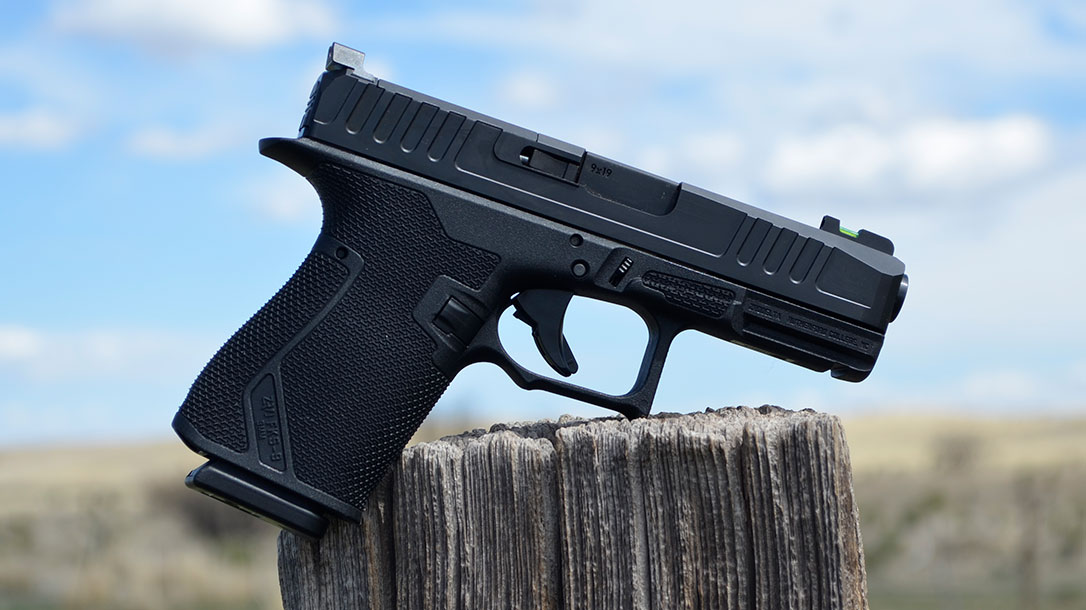Estimated reading time: 10 minutes
How many times have we walked into a hardware store or home center hoping to replace an old nut or bolt and found ourselves paying $2 dollars for a single screw?
If you haven’t already started, it’s a good idea to keep that old hardware. It will not only save you a lot of money in the long run, but make a lot of repairs faster and simpler. Here is some hardware you can salvage.
Nuts, bolts, screws, and washers are the obvious place to start. It may seem like an imposing assortment of hardware, but generally these items fall in a range of standard sizes most often used to fasten, hold, and simply keep things together.
Another category to consider are nails. Typically nails are the cheapest type of hardware because they don’t require a lot of machining or as much precision to manufacture, but in desperate times hardware may be in short supply and nails may be the first type of hardware to sell out.
Most nails come out of wood pallets, frames and other wood construction either bent or rusted. The rust isn’t a terrible problem, and a hammer on a small anvil on a vise or even a rock can straighten them. There are many videos of people building remote outbuildings using nothing but straightened and recycled nails.
Large bolts, washers and nuts designed to fasten beams for decks, foundations, and other heavy construction are a real find. Just one of these bolts with a washer and nut can run as much as $4 at some hardware stores.
Plumbing hardware made from brass or copper are commonly found on old washing machines, some engines and other appliances. This is another category that always carries some sticker shock when you just want to buy a small replacement for a project.
Gears, chains and fan belts show up all the time, and it may be worth collecting them when they show up. Many of these are precision parts and if you need a gear or fan belt for an improvised invention, it helps to have a chance to find it in your hardware collection rather than have to buy it.
Springs show up all the time during salvage and can come in handy for fence gates or anything else you’re building or fixing that requires a spring.
Hinges and knobs from old cabinets, doors, and drawers is another hardware category that can be very expensive when bought new. This hardware can be restored with a little cleaning, staining, or paint and are worth keeping.
Wire and wiring clips from any appliance or equipment with an electrical function are another possibility. The lengths will vary, but if a length of wire needs to be replaced in a certain gauge, it can save you from buying a full spool of wire when you only need about a foot.
As you start to salvage and collect your hardware, you’ll no doubt find yourself saving most every little part or piece you can loosen. That’s worth doing because anyone who builds, repairs, or renovates knows that the need for a connection or fastening is going to arise that requires a specific hardware solution.
There’s other stuff but a lot of that has to do with the kind of projects you pursue and whether or not you really think you might use it someday. If your hardware collection starts to get out of hand, you can always go through it and toss some stuff.
Storing and Sorting Your Salvaged Hardware
The old go-to storage container for salvaged hardware is an old coffee can. That works, but it means dumping out the contents on the tool bench and searching every time you need a certain nut, bolt or screw.
It’s simpler if you buy a plastic box with compartments or stacking storage bins that will at least let you isolate hardware by type, size or use. How precise you want to be depends a lot on how much time you have to sort, and your personal inclination for organization.
Then again, those old coffee cans are very handy for collecting assorted hardware that’s a bit too large for a plastic box like springs, larger gears, or other stuff that just won’t fit in a neat compartment.
Usually, everything is collected in a can or box when first salvaged and sorted later… sometimes. Think of sorting hardware as a good rainy day, weekend project. It’s a bit of a hassle but it’s no worse than searching the catacombs of Home Depot looking for a nut or bolt.
This is nothing fancy, and the tools are fairly basic. A socket set, screwdriver set, pliers, an adjustable crescent wrench, small crow bar and a hammer should give you a fighting chance to salvage most hardware. Vise grips and wire cutters may come in handy too.
Restoring Salvaged Hardware
Two things essentially happen to old hardware. It either rusts or gets bent or slightly damaged. The question is what you want to do about it.
Rust is easy to remove with a variety of products and solvents designed to remove rust. Just soak any rusty hardware in the solvent and follow the directions until they’re cleaned up a bit. You could also soak them in vinegar for a basic cleaning.
Hardware that has been nicked or damaged can be repaired to some degree. Nails are easily pounded straight, and some bolts and screws can be rethreaded by using a wrench to tighten a nut back down onto the threads.
If it’s beyond repair, get rid of it.
The Salvage Mindset
Anyone who engages in any degree of salvage is usually someone who spends a good amount of time building, restoring or repairing things. It doesn’t make a lot of sense to save a lot of old nuts, bolts and screws if you’re never going to use them.
However, you never know when the day may come when you just can’t seem to find that simple piece of hardware to fix something you never thought you’d have to fix. With that in mind, here are some sources for future hardware salvage.
10 Sources for Hardware Salvage
The sources for hardware salvage are all around us. Some of the stuff is as basic as things we often throw away. Other stuff is abandoned, sitting out on a curb in the neighborhood waiting for the garbage man, or left somewhere.
Then again, there’s always junkyards. The thing that becomes apparent is that most things are held together with various types of hardware, and it’s just a question of removing them and keeping them for when you need them.
1. Old Appliances
Before you take that old refrigerator, washing machine, or dishwasher out to the curb on garbage day, give yourself a little time in the garage to pull out some of those nuts, bolts, and screws.
You might also think about salvaging any specific plumbing hardware, and some of us would even keep the motors and pumps. A lot of that has to do with how ambitious your future projects might be; the situation affecting availability of parts and supplies, and your storage space.
Key hardware to look for includes large nuts and bolts, sheet metal screws, springs, plumbing hardware and components, and if pursuing ambitious projects, things like motors, fan belts, and pumps.
2. Abandoned Vehicles
Even if an old car or truck has been stripped down for parts, it’s a good bet there are plenty of robust pieces of hardware still attached, among other things.
Key hardware to look for includes large bolts and nuts, washers, wiring, springs, and fan belts.
3. Old or abandoned equipment
There’s a range of old and abandoned equipment to think about such as lawn mowers, tractors, pumps, and other equipment used outdoors.
Key hardware to look for includes all nuts, bolts, washers, screws, springs, sheet metal screws, pins and fan belts. Keep an eye out for obscure or other types of hardware that you think you might need or could use.
4. Old cabinets
The big win with old cabinets and drawers is the ability to salvage hinges, knobs, nails and various bolts and cabinet fasteners. The wood doors could also be used for shelving, but that’s up to you.
Key hardware includes all hinges, knobs, and attachment screws that should be screwed back into the knob for storage, legs, and any other fasteners used to hold the cabinet or drawer together.
5. Bicycles
Bikes don’t present as much hardware as some of these other items, but hardware salvage is quick and pretty easy.
Key Hardware to look for includes chains, bolts and nuts, cables, and if you’re restoring bikes, derailers, kickstands, spokes, bike seat, and pedals.
6. Abandoned buildings
Be careful in any abandoned building and respect ownership. It’s best to have permission, especially if you’re salvaging.
Key hardware to look for includes light switches (be sure the electricity is off), electrical outlets, various plumbing and other hardware in the basement from fuses to beaker switches, hardware from doors and windows, and any kitchen hardware from cabinets, drawers or sinks in good shape are easily salvaged.
7. Old doors and windows
Before you throw out any door or window, take some time to remove the hinges, door knobs, dead bolts, and any other hardware attachments. These are great to have if you ever construct a shed, greenhouse or other outbuilding, or if you’re just repairing an existing door.
8. Hardware and Home Center parking lots
One of the fastest ways to get a flat tire is to spend a lot of time driving around a home center parking lot. For some reason, hardware seems to litter the asphalt. A lot has to do with the high volume of construction traffic as various tradesman bounce through the lot with their trucks and leave some loose screws and bolts on the ground.
If you’ve ever paid any attention while walking through a home center parking lot, you’ve probably seen more than a few loose nuts and bolts on the ground. Pick them up and sort them into your bins at home.
9. Old power tools
The day eventually comes when all power tools don’t work. Take the time to remove any hardware holding them together.
Key hardware to look for includes small screws that are usually hard to find, various springs and connectors, and don’t forget to cut and keep the old power cord. They’re usually rated at around 10 gauge and can make for a fast repair to a frayed or damaged power cord in the future.
10. Old gas and electric motors
To begin with, old gas and electric motors are bolted together with some good sized nuts and bolts. If you do any small engine repair, there are additional items you should salvage. Someone experienced with small engine repair will do doubt know what to isolate and salvage, from spark plug connectors to carburetors and air filters.
Key hardware to look for from both gas and electric motors includes wiring, magnets (from electric motors) all nuts, bolts and screws, belts, belt drives, and even copper wire from electric motors for sale at a junk yard.
Managing Your Salvaged Hardware
It’s always possible that you’ll salvage too much. In order to avoid the inevitable complaint from a family member about hoarding too much junk, keep an eye on what you collect. Organizing salvaged hardware is the best idea all around, and it will keep things not only easy to find but avoid the junky clutter of old stuff laying around all over the place.
As time goes on, assess what you are actually using and if stuff just seems to sit without use, toss it. Most of this salvaged hardware started out as discards, and maybe that’s where it belonged in the first place.

Read the full article here




